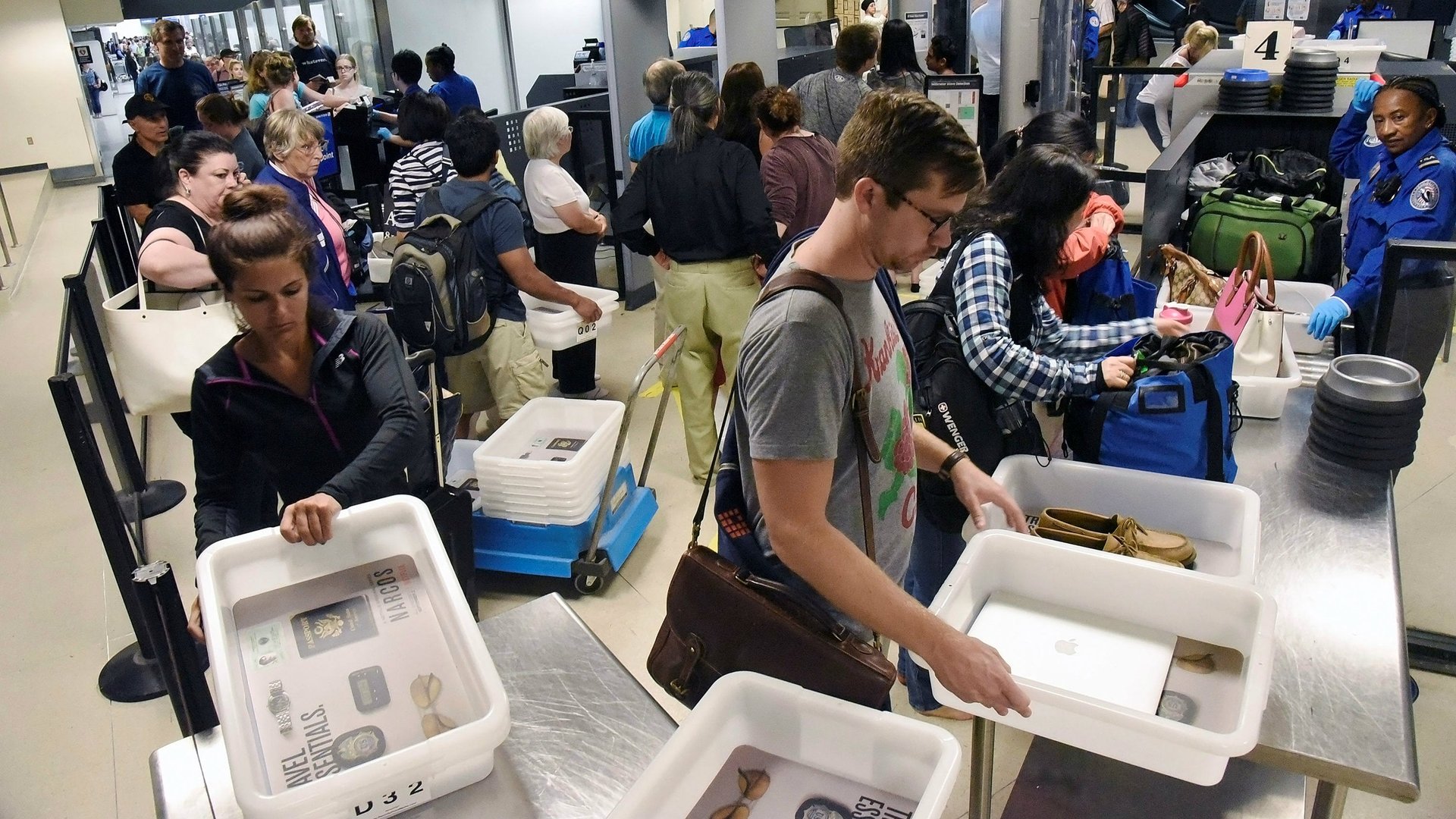That airport security line holdup? It’s your travel snacks
The seasoned traveler knows that a successful security line process is one that passes quickly and without incident—no second screenings, requests to remove more items of clothing, or manual bag searches. For travelers trying to make security as seamless as possible, there’s a new pitfall that could cause a delay: your snacks.


The seasoned traveler knows that a successful security line process is one that passes quickly and without incident—no second screenings, requests to remove more items of clothing, or manual bag searches. For travelers trying to make security as seamless as possible, there’s a new pitfall that could cause a delay: your snacks.
For the past few months, chatter on social media has detailed incidences of travelers passing through American airports and being asked to separate out any food they have in their carry-on. Some were even told by TSA agents that these removals were mandatory, similar to liquids and electronics.
In fact, there is no formal policy requiring you to remove snacks from your bag as travelers must do with laptops and liquids. A TSA spokesperson, however, told Quartz that while there is no new policy pertaining to food, “during especially busy times, our officers may advise passengers to remove food from their carry-ons as it reduces the likelihood of bag searches.”
According to a piece in the New York Times last week, the reason that traveling with food increases the likelihood of additional bag searches is that “some food materials look similar to explosives in an X-ray.” In addition, carry-ons stuffed to the brim with snacks and other items can be hard to read during screening, making it more likely that a manual search will be required.
The TSA has an exhaustive, alphabetized list of food items (and every other item imaginable) you can and cannot carry on board. For the most part, travelers needn’t worry about limiting the amount of nuts, energy bars, chocolate, dried fruits, and other solid snacks they take on board. Though do remember that flying internationally with fresh foods like dairy, fruit, or meat is almost always a bad idea, unless you declare it to customs at your destination.
When it comes to liquid, creamy, or spreadable foods, things are a little bit different. If you carry on things like honey, hummus, peanut butter or, say, a jar of mustard or jam to give as a gift, it still has to fall under the TSA’s 100 ml rule and will count towards your total liquid allowance of a 1 qt size resealable bag.
Overall, if you’re trying to minimize any friction while going through security, you’re better off separating any foods in a transparent bag which you can easily remove from your larger carry-on. It’s annoying, yes, but in the end it’ll save you strife and get you to your gate even faster.